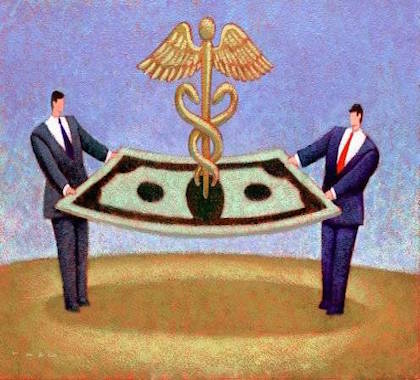The federal government is paying for a continually increasing share of Americans’ health care, with current and future federal taxpayers’ proportion of overall health care spending now approaching 50 percent and state-level spending pushing the proportion of government spending well above that.
Chris Conover, a former research scholar at the Center for Health Policy and Inequalities Research at Duke University and an adjunct scholar at the American Enterprise Institute, says an accurate calculation of the federal government’s full share of health care spending must include the value of tax exemptions, especially the tax exclusion for employer-purchased health insurance.
“In 1967, federal direct spending only accounted for 20.6 percent of U.S. health spending, but once federal tax expenditures are taken into account, the figure rose to 30.2 percent,” Conover said. “Now, almost 50 years later, due to the addition of Medicare, Medicaid, and Obamacare, the federal government is already financing 47.1 percent of all American health care spending.
“The rising share of spending is alarming, and in less than 10 years, Americans will have spent $100 trillion on health care in just the last century,” Conover said.
Heading for Canada
Merrill Matthews, a resident scholar at the Institute for Policy Innovation, says including the states’ share of health care spending makes the number even more alarming.
“When you add in what the states spend on health care, about $225 billion on Medicaid alone in 2017, then it’s fair to say the taxpayer-funded government is spending significantly more than 50 cents of every health care dollar,” Matthews said. “For comparison, in Canada, which many leftists consider the model of a government-run, single-payer system, the government spends about 70 cents of every health care dollar. Thus, we are getting very close to matching the government health care spending portion of Canada, and the U.S. doesn’t have a single-payer system.”
‘Will Bankrupt the Country’
Devon M. Herrick, a health economist and policy advisor to The Heartland Institute, which publishes Health Care News, says people often make the mistake of assuming the U.S. health care system is largely a private-sector, free-market endeavor. On the contrary, the system is distorted by massive health care entitlements, especially Medicare and Medicaid, which are driving the increasing amount of health care paid for by taxpayers. The cost will only rise further over the coming decades, Herrick says.
“Without reform, medical spending will bankrupt the country in coming years,” Herrick said. “The Medicare Trust Fund, supposedly the source of government funding for these programs, is simply a clearinghouse of tax revenue and, what’s worse, is expected to become insolvent in less than two decades. There is no pot of gold to cover medical bills, just taxpayers willing to shoulder the burden.
“At some point, they’ll no longer be able to afford the bill,” Herrick said.
INTERNET INFO
Chris Conover, “The Federal Share of American Health Spending Is Now Approaching 50%,” Forbes, June 1, 2018: https://www.forbes.com/sites/theapothecary/2018/06/01/the-federal-share-of-american-health-spending-is-now-approaching-50/#9ef7efe54d1c
Chris Conover, “American Health Spending: $100 Trillion in Less Than One Century,” Forbes, October 31, 2017: https://www.forbes.com/sites/theapothecary/2017/10/31/american-health-spending-100-trillion-in-less-than-one-century/#33a6fdd2474e





